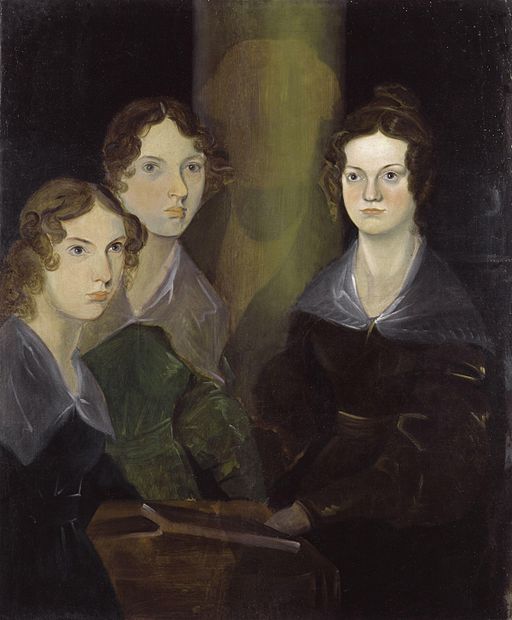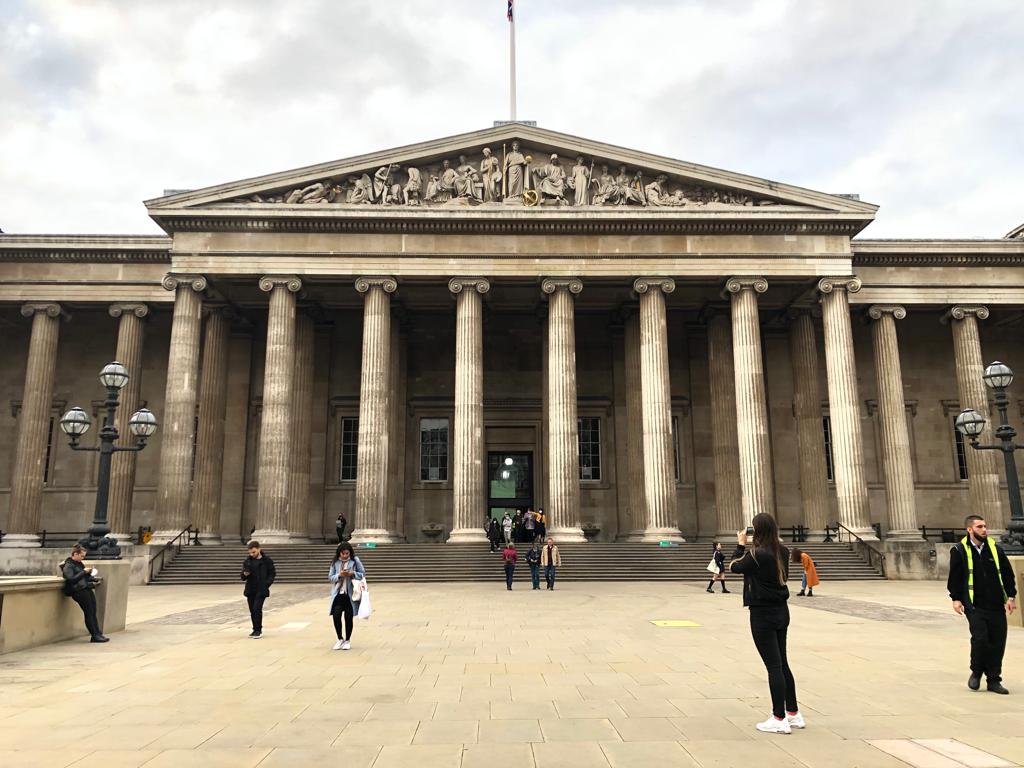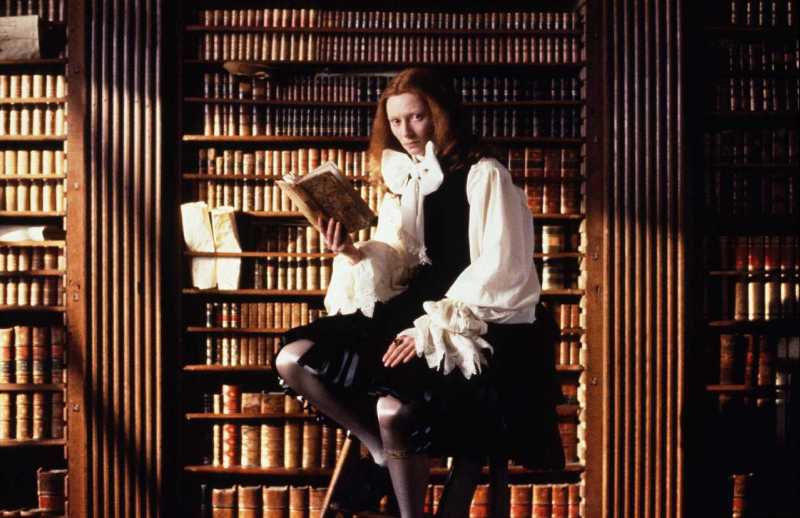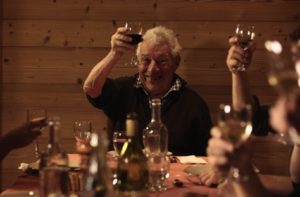This post was contributed by Dr Siv Jansson, Associate Lecturer in Birkbeck’s School of Arts. She was Literary Advisor on To Walk Invisible (written and directed by Sally Wainwright: BBC).

The Brontë Sisters by Patrick Branwell Brontë restored
A drama about the Brontes was something which Sally and I had talked about over a number of years, and I knew it was a topic she had long wanted to do. In 2014 it was green-lit by the BBC, and by the end of that year the process of producing the script began.
Sally did a tremendous amount of research and had clear ideas concerning the approach she wanted to take, and it was my job to support that. There is no clear ‘job description’ for the role of literary advisor; it depends upon the people you are working with and the nature of the project. The literary advisor is there to do just that, advise: the decisions rest with the writer/director and producer. Sally and I had many, many lengthy discussions, and I read the drafts of the script bit by bit as she wrote them. I’d comment or suggest, but it was always Sally’s script. She made the decision to focus on the period 1845-8, and I agreed with this; even though the BBC gave us an extra 30 minutes – making it a120-minute instead of a 90-minute film – to try to fit all the Brontes’ lives – and deaths – into two hours would have been an impossible task. 1845-8 is the period when the writing emerged into the public domain so it made sense to concentrate on that.
A major part of my role was research; for example, I found the newspaper story which Charlotte is reading to her father in one of the early scenes. It’s from the Leeds Intelligencer: Sally wanted something which would have been in the news at that time and of interest to Patrick (it was a story about Irish politics). I also re-read all the biographical material available and anything Sally didn’t have time to look at, looked up details – for example what information was available at that time on delirium tremens – put together a compendium of descriptions of the Brontes and the various images which are or have been claimed to be them, and also investigated some of the most well-known but possibly unfounded Bronte myths. As Juliet Barker has pointed out, Branwell not only didn’t go to London, but was never intended to do so – there is a letter from Patrick which talks about sending him the following year. Following up on this, I spent an afternoon in the British Library looking at coaching timetables and journeys to establish that he actually could not have made the journey he is supposed to have made on the dates or times he is thought to have made it, and that the planned trip to London was, indeed, a myth. We considered whether to excise the flashback scene where Branwell is describing to his father and aunt that he had been robbed in London (while Emily observes from the doorway), but decided that it did important work in terms of establishing character and Emily and Branwell’s relationship, and that it should stay for these reasons. These kinds of decisions are part of the business of producing a drama.
We were very lucky to have rehearsal time with the cast who were playing the family, and they spent a week in Haworth with Sally, where I joined them for a couple of days. It was an opportunity for them to see the Parsonage and spend time with the staff, work with Sally, benefit from the expertise of people like Ann Dinsdale (Principal Curator at the Parsonage), Juliet Barker (historian and author of The Brontes) and Patsy Stoneman (Bronte scholar), and to bond in a way which I firmly believe contributed a great deal to the success of the film and the strength of their performances.
There has, of course, been some coverage in the press over Branwell’s use of the word ‘fuck’. I understand that some people have been troubled by this as being inappropriate or too contemporary but Branwell would have been mixing with quite a range of individuals as his drinking and opium habit developed and I think it perfectly credible that he would have sworn at all of the family as his life deteriorated. We referred this to Ann Dinsdale who concurred with us. I also think that there remains an assumption that great writers, or even those associated with them, must talk in some kind of ‘elevated’ way rather than like ordinary human beings. Anyone who knows Sally’s work will be aware of the sheer believability with which she imbues her characters and her dialogue. One of our key principles in developing the script was that the Brontes should behave and interact as much like a real, ordinary family as possible; there was to be no mystic wafting on the moors or notions that people born and bred in Yorkshire would talk as if they had just left elocution school. It is also essential, from a commercial point of view, to create characters who will have some resonance with contemporary viewers who may not be Bronte experts, or even fans.
Getting details right was a commitment made by everyone involved, and when I saw the recreation of the Parsonage rooms at the studios in Manchester, I was, quite frankly, amazed; without the benefit of any contemporary images from which to work, Grant, our designer, and his team came up with brilliant representations. Equally, the reconstructed parsonage on the moors was astonishing; seeing it built (and seeing what it looked like before it was finished!) gave me a real appreciation of the levels of skill involved in making something like this happen.
As anyone who works with biography will know, it is a slippery art form. Biographies are shaped by their cultural moment and the direction pursued by the biographer, whether on paper or screen. Bronte biography is particularly problematic because it is so dogged by myth-making , as Lucasta Miller has so aptly observed, and also because it is so patchy and erratic. We know a reasonable amount about Charlotte, though there are significant gaps; less about Anne and Branwell; relatively little about Emily. This is both a gift and a curse; it leaves wonderful imaginative spaces but at the same time means that speculation is inevitable. All any biographer or dramatist can do is provide their interpretation of the information we have. Dramatising the Brontes brings with it additional demands because they carry such a mystique with the public and their readers, and I think we were all aware that whatever we did, there would be some who would not like it.
Do I like it? I love it. The film does exactly what I wanted it to do when Sally and I first discussed it; it resists the myths, it shows a real – and sometimes dysfunctional – family, and it portrays the significance and development of the writing. I am somewhat baffled by those who complained that it didn’t show enough of this – I could itemise so many scenes which showed, or talked about, the poetry, or the novels, or the juvenilia. It even revealed Branwell as a writer, though clearly nowhere near the stature of his sisters. Writing is not a dramatic act: it is necessarily static and largely internal as a creative process. To show repeated scenes of people writing at tables – or even walking round them – would have been utterly tedious; nor do I think it was imperative to keep reminding the audience that the Brontes wrote. Yes, I have favourite scenes: Emily and Branwell’s nocturnal exchange sitting on the gate, the opening with the children, Emily speaking ‘No Coward Soul’ to Anne, the scene in Smith, Elder & Co. in London, the discovery of Emily’s poetry (and her reaction), the visit of William Allison to Branwell in the Black Bull, and the bailiffs’ scene.
What advice would I give to anyone taking up the job of literary advisor on a similar project? Be flexible and open to ideas, be thorough, respond speedily to queries and requests, love the topic (but) keep the genre of TV and its demands in mind, don’t expect drama to operate as a documentary, accept that your suggestions or advice won’t always be taken, and realise that the writer, director and producer have the final say. I had never worked on a project like this before and it was a (sometimes steep) learning curve; but I loved the experience, was delighted with the response, and am very proud of what we achieved.








